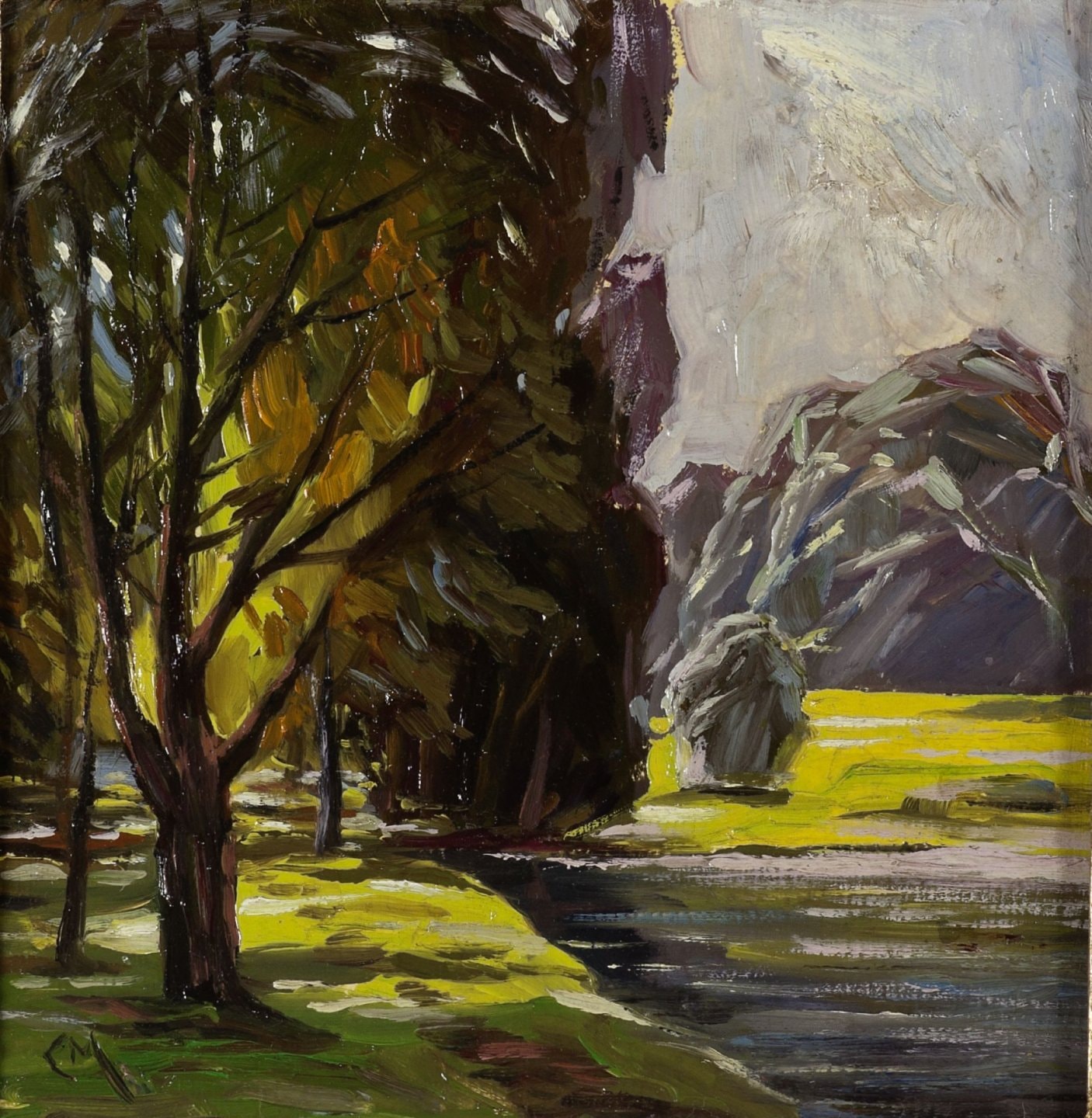Carl Moll
Carl Moll
(1861, Vídeň - 1945, Vídeň)
 Carl Moll patřil k nejvýznamnějším a nejvlivnějším osobnostem vídeňského uměleckého života na přelomu 19. a 20. století. Jako malíř krajin, zátiší a interiérů vycházel z tradice impresionistické náladové krajinomalby. Byl jedním ze zakladatelů Vídeňské secese, jejíž charakteristický dvourozměrný styl později modifikoval expresivním způsobem plným světla a prostoru. Jeho tvorbu proslavily rovněž velkoformátové barevné litografie a dřevoryty.
Carl Moll patřil k nejvýznamnějším a nejvlivnějším osobnostem vídeňského uměleckého života na přelomu 19. a 20. století. Jako malíř krajin, zátiší a interiérů vycházel z tradice impresionistické náladové krajinomalby. Byl jedním ze zakladatelů Vídeňské secese, jejíž charakteristický dvourozměrný styl později modifikoval expresivním způsobem plným světla a prostoru. Jeho tvorbu proslavily rovněž velkoformátové barevné litografie a dřevoryty.
Studoval na Vídeňské akademii u Christiana Griepenkerla a Emila Jakoba Schindlera. V roce 1885 se oženil s Annou Sofií Bergenovou, vdovou po E. J. Schindlerovi.
V 90. letech 19. století získal zlatou medaili na Mezinárodní výstavě umění v Berlíně. Na jeho podnět vznikla v roce 1903 Státní moderní galerie ve Vídni (dnes galerie Belvedere). Secesi opustil v roce 1905 spolu se skupinou kolem Gustava Klimta. V letech 1904–1912 působil jako ředitel galerie Miethke. Byl členem Německého svazu umělců, od 30. let se politicky orientoval k nacismu, po příchodu Rudé armády spáchal se svou dcerou a zetěm sebevraždu.
Carl Moll war eine der bedeutendsten und einflussreichsten Persönlichkeiten der Wiener Kunst an der Wende vom 19. zum 20. Jahrhundert. Als Maler von Landschaften, Stillleben und Interieurs knüpfte er an die Tradition des Stimmungsimpressionismus an. Er war einer der Begründer der Wiener Secession, deren charakteristischen flächigen Stil er später in einer ausdrucksstarken, licht- und raumvollen Malerei modifizierte. Berühmt war er auch für seine großformatigen Farblithografien und Holzschnitte.
Er studierte an der Wiener Akademie bei Christian Griepenkerl und Emil Jakob Schindler. 1885 heiratete er Anna Sofia Bergen, die Witwe von E. J. Schindler.
In den 1890er Jahren gewann er eine Goldmedaille auf der Internationalen Kunstausstellung in Berlin. Auf seine Initiative hin wurde 1903 die Staatliche Moderne Galerie in Wien (das heutige Belvedere) gegründet. 1905 verließ er die Secession zusammen mit der Gruppe um Gustav Klimt. Von 1904 bis 1912 leitete er die Galerie Miethke. Er war Mitglied im Deutschen Künstlerbund, politisch orientierte er sich seit den 1930er Jahren am Nationalsozialismus. Nach dem Eintreffen der Roten Armee beging er gemeinsam mit seiner Tochter und seinem Schwiegersohn Selbstmord.
Carl Moll was one of the most important and influential figures in Viennese art at the turn of the 19th and 20th centuries. As a painter of landscapes, still life’s, and interiors, he drew on the tradition of impressionistic moody landscape painting. He was one of the founders of the Vienna Secession, whose characteristic two-dimensional style he later modified in an expressive manner full of light and space. His work was also famous for his large-format color lithographs and woodcuts.
He studied at the Vienna Academy with Christian Griepenkerl and Emil Jakob Schindler. In 1885 he married Anna Sofia Bergen, the widow of E. J. Schindler.
In the 1890s he won a gold medal at the International Art Exhibition in Berlin. At his initiative, the State Modern Gallery in Vienna (today's Belvedere Gallery) was founded in 1903. He left the Secession in 1905, along with the group around Gustav Klimt. From 1904 to 1912 he was director of the Miethke Gallery. He was a member of the German Artists' Association; from the 1930s he was politically oriented towards Nazism, after the arrival of the Red Army, he committed suicide with his daughter and son-in-law.
